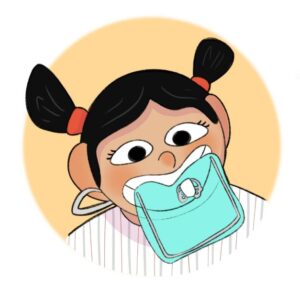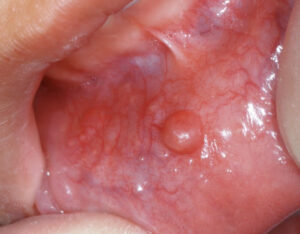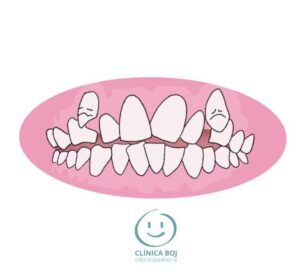Teething pain in baby teeth: how to avoid discomfort?
What are the symptoms of teething?
Teething is an important process in the development and dental health of the child. Sometimes there is some discomfort when the baby teeth (or primary teeth) are about to erupt. What can we do to avoid this discomfort?
The process of tooth eruption is a natural and physiological step in the human’s development. Simply put, teeth usually emerge in a hole opened in the gum. Babies typically start with the eruption of a front bottom teeth.
This process in your child’s teeth produces a slight pain that is bearable, although it causes concern in the child and in the parents.
How do I know if baby is teething?
Occasionally, the symptoms that uncover it in milk teeth are:
a) Very abundant salivation, or drooling.
b) They try to put hard objects in their mouth to bite or chew them.
c) Babies with only a few months of age act as if they were irritated.
How to relieve gum pain in babies?
We must be careful, as there are over-the-counter products in pharmacies that may not be appropriate for children.
For example, some gels have certain risks for a small child. They can certainly cause local reactions, tremors in case of overdose, and even blood diseases such as methemoglobinemia.
Also, gels containing the local anesthetic benzocaine should not be used on children under two years of age.
However, to alleviate discomfort, we recommend the use of a previously frozen rubber ring. Undoubtedly, frozen rubber rings help to alleviate the pain of teething, especially when the front teeth erupt. They are very useful to press the lower and top teeth against each other, accelerating the process. Also, there are commercially available teethers for the child to bite the low and upper jaws during the eruption of teeth.
How long does teething pain last?
The most frequent pathology associated with tooth eruption usually causes small systemic discomforts that are easily solved.
In the baby teething pain syndrome, of which certain children are more affected in the teething process, we observe:
(a) Irritable children who put their fingers in their mouths.
Above all, only clean fingers should touch the inflamed gums. Otherwise, an infection with fever could be caused as a consequence.
b) Excessive secretion of saliva.
Also, known as tialism or, at home, as drooling.
In some cases, systemic or general symptoms related to the dentition also appear, among which the following stand out:
(c) Fever.
Normally, an inflamed and warm gum does not cause fever. Nevertheless, a low-grade fever may appear, that is, a few tenths of a degree up to 37.5ºC.
d) Diarrhea
In this case, it is important to keep the baby well hydrated. It is advisable to drink adequate fluids and food to control the problem. Also, bottles where liquids are filled and plates where food is kept should be carefully cleaned.
e) Crying
f) Drowsiness
g) Decreased appetite
h) Increased thirst.
Where do the first teeth erupt at the top or bottom?
As we have said, the first teeth to erupt are the lower central incisors between 6 and 10 months. Once they have appeared, the upper central incisors erupt between 8 and 12 months.
The teeth that follow are:
a) the laterals,
b) molars,
c) canines and finally
d) the second molars.
Therefore, there is a greater risk of babies developing tooth decay in these teeth that erupt first. This is why we always prevent from letting them fall asleep with a bottle with sugary liquids in their mouths. Permanent teeth will erupt better in the future if milk teeth are kept healthy.
To end, the symptoms that follow the eruption of baby teeth is a common concern of parents.
For this reason, we recommend the use of cold accessories for the child to bite. Undoubtedly, cold or frozen objects will act as an anesthetic for the gums. For this purpose, we suggest the use of wet wipes and frozen rings.
The prescription of oral analgesics will only be used in very specific cases. And, always under the assessment of the pediatric dentist.
References:








